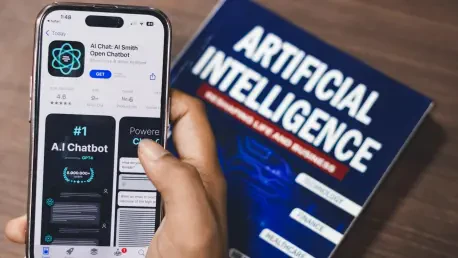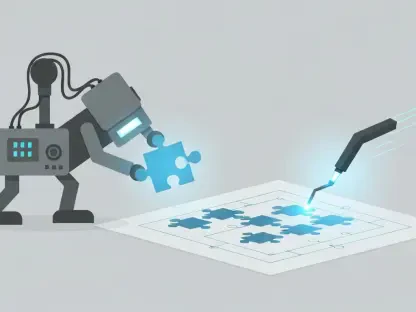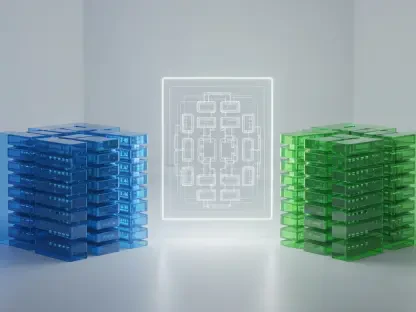At the Google I/O 2025 developer conference, a groundbreaking tool known as Stitch was unveiled, marking a significant advance in AI-driven app development. This innovative resource is engineered to streamline the creation of web and mobile app front ends by generating UI elements and code. Stitch, a testament to Google’s prowess in artificial intelligence, leverages the capabilities of the Gemini 2.5 Pro and Gemini 2.5 Flash AI models. These models empower the tool to deliver HTML and CSS markup for app designs based on user inputs, which can include both textual prompts and images. This move by Google coincides with a wider industry trend toward vibe coding, where companies like OpenAI’s Codex and Microsoft’s GitHub Copilot have also been making strides. However, Stitch distinguishes itself by offering export functionality to widely-used platforms like Figma while maintaining a core emphasis on customization. Despite the impressive features, Stitch is not intended to compete with comprehensive design platforms like Figma or Adobe XD. Instead, its primary focus is on user-friendly ease of use, enabling designers to refine and perfect initial designs generated by the tool. Moreover, an upcoming feature suggests that users will soon be able to make design alterations by annotating screenshots—a capability that anticipates further integration with practical design needs.
Stitch’s Unique Approach and Features
While many AI tools in the app development landscape focus on comprehensive solutions, Stitch sets itself apart with its distinctive approach centered on customization and incremental design. The ability to export designs to platforms like Figma underscores this focus, providing developers with a seamless integration process that supports existing workflows rather than replacing them. This integration fosters collaboration and creativity, as users can build upon preliminary designs with enhanced detail and organization. Another standout feature of Stitch is its focus on user input diversity. By accepting both words and images as prompts, it allows a broader range of expression in initial design phases. This flexibility is crucial for developers working on diverse projects, as it accommodates varying design perspectives and specialized requirements. Furthermore, the tool’s promise of an annotation feature represents adaptability to real-world design changes, allowing users to modify designs through simple interactions like annotating screenshots. This prospective capability emphasizes the software’s user-centered design philosophy, making it accessible to both experienced developers and those new to app creation. Such features collectively demonstrate Google’s commitment to fostering innovation and simplicity in app development through AI.
Google’s Expanding AI Ambitions
Alongside Stitch, Google is extending its AI capabilities with Jules, an AI agent developed to assist developers with tasks such as bug fixes, pull requests, and other programming endeavors. Currently in public beta, Jules relies on the robust processing power of the Gemini 2.5 Pro model to deliver practical support in app development projects. During public demonstrations, Jules showcased its potential by streamlining complex tasks, including upgrading Node.js versions. By providing users with structured upgrade plans and verifying functionality post-upgrade, Jules embodies Google’s strategy to simplify intricate development tasks. The introduction of Jules complements Stitch’s functionalities, reflecting a broader strategic agenda by Google to revolutionize the app development sector with AI-enhanced tools. These initiatives indicate Google’s dedication to reducing barriers in development processes, making sophisticated programming tasks more accessible to a wider array of developers. This broader vision doesn’t just address immediate development needs; it also sets the stage for a more integrated and efficient development landscape. The synergy between Stitch and Jules hints at future collaborations and innovations that might redefine how developers interact with AI in everyday programming scenarios.
Future Prospects for AI-Driven Development
During the Google I/O 2025 conference, Stitch emerged as a revolutionary tool in AI-driven app development. This groundbreaking tool simplifies the process of creating front ends for web and mobile applications by generating UI elements and code. Backed by the advanced Gemini 2.5 Pro and Flash AI models, Stitch can produce HTML and CSS for app designs from user inputs like text prompts and images. This development aligns with industry trends in vibe coding, with companies like OpenAI’s Codex and Microsoft’s GitHub Copilot pushing boundaries in this field. Stitch, however, stands out by providing export capabilities to popular platforms like Figma, focusing heavily on customization. Unlike comprehensive design tools such as Figma or Adobe XD, Stitch prioritizes user-friendly features, allowing designers to enhance initial tool-generated designs. Additionally, an upcoming feature will enable users to modify designs by annotating screenshots, foreseeing deeper integration with practical design requirements.









